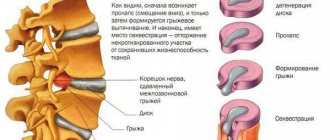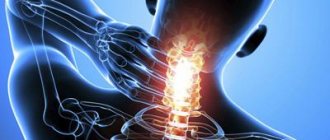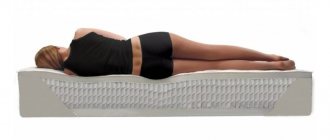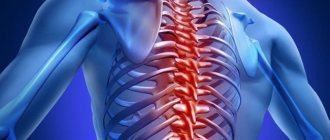Physiotherapy is one of the most effective methods of rehabilitation and treatment of diseases of the musculoskeletal system in combination with other methods. It allows you to gently act on tissues, helping to improve their condition.
Physiotherapy can be used either independently or in combination with other methods - medication, exercise therapy, massage. However, its use allows you to partially or completely abandon a number of medications. In orthopedics and traumatology, physiotherapeutic procedures can accelerate the recovery and function of tissues: muscles, ligaments, tendons, bones, etc.
Physiotherapy methods
Physiotherapeutic treatment includes a complex combination of various methods that are selected individually for each patient, depending on the injuries and tissue condition. In orthopedics and traumatology, the following methods are used for rehabilitation after injuries, operations and in the treatment of various conditions:
- magnetotherapy,
- laser therapy,
- electrophoresis,
- ultrasound,
- shock wave therapy.
They affect the affected area differently. If necessary, additional medications are used - ointments, which penetrate better when exposed to physiotherapeutic procedures.
What is achieved by physiotherapy for osteochondrosis?
Physiotherapy is a modern and effective method to combat osteochondrosis. It acts specifically on the area of inflammation without affecting neighboring organs and tissues. Physiotherapy for osteochondrosis of the lumbar spine is aimed at eliminating pain and restoring the affected vertebrae.
After a series of physiotherapeutic procedures, inflammation is significantly reduced. The mobility of the affected vertebrae is restored. Tissue swelling is eliminated. Blood circulation in the inflamed area is normalized.
The functioning of all internal organs returns to normal. The body’s immune system is strengthened.
Magnetotherapy
This method affects the treatment area using special magnetic fields of a set frequency and shape, continuous or variable. It has the following effect:
- relieving inflammation,
- relief from pain,
- elimination of swelling,
- improvement of blood microcirculation,
- muscle relaxant effect,
- acceleration of healing of bones and soft tissues.
Magnetic therapy has a long-lasting effect that lasts for a long time: for several months, up to six months.
Types of treatment for osteochondrosis
Detensor therapy - with the help of a special mat equipped with elastic ribs, the spine is stretched. Located on the mat, special ribs begin to influence the spine, muscles relax, and spasms are relieved. The correct position of the vertebrae is restored, and the back muscles become toned.
Magnetic therapy - low-frequency pulses of a magnetic field are applied to tissues. Blood viscosity changes, swelling is relieved, blood vessels dilate, all this has a positive effect on metabolic processes in inflamed tissues. This procedure is performed only on an outpatient basis.
Ultraviolet irradiation - special equipment eliminates inflammatory foci, providing a bactericidal effect. Treatment begins with small doses of ultraviolet rays, which are increased with each procedure. But before that, you need to do an ultraviolet sensitivity test.
Phonoresis - Drugs are administered using ultrasound vibrations. This makes it possible not only to eliminate swelling and inflammation, but also to deliver active substances to the damaged area. Metabolic processes are accelerated, tissues receive the necessary nutrients.
Ultrasound - micromassage of tissues is performed, which activates blood circulation, providing an analgesic and anti-inflammatory effect.
EHF is a high-frequency therapy that stimulates active points of the body and does not damage the skin as is the case with acupuncture. After several sessions, the movement of the spinal discs increases.
Laser therapy - a special laser is directed to the damaged area, it helps reduce inflammation, pain, and helps the body recover. An improvement in general condition and a decrease in pain is observed after the first sessions. The duration of the procedure is 15 minutes.
Exposure to vibration - treatment is carried out by mechanical vibrations produced by a belt vibrating massager.
Physical therapy is probably the most commonly used method of treatment and prevention of the initial stage of osteochondrosis. A special set of exercises is selected for each patient.
The doctor chooses which method to use after first discussing this with the patient and conducting the necessary health research. For example, for severe pain, laser therapy and phonoresis are indicated, and for osteochondrosis with vascular problems, magnetic therapy is indicated. Physiotherapy procedures are prescribed only during the period of remission and subsidence.
It is believed that over time, physical therapy procedures will replace certain medications. After all, even now, using only physiotherapy and physical exercise, it is possible to cure such an ailment as osteochondrosis. Of course, this will be possible by contacting a specialist at the first sign of a problem.
Laser therapy
The method affects tissue using a high-concentration light-chromic beam. It stimulates processes in tissues that promote blood flow and increase blood circulation in the area of application.
Laser therapy has the following effects:
- antibacterial effect,
- elimination of swelling and inflammation,
- pain relief,
- stimulation of tissue healing.
Due to this effect, pain is relieved and inflammation is eliminated, and tissue regeneration is accelerated.
Physiotherapy for osteochondrosis of the lumbar spine
Osteochondrosis is a spinal disease that is widely known to virtually every person.
Painful sensations in the back, lower back and neck are more often experienced by older people, but young people are not immune from it. At first glance, an innocuous disease can have a serious negative impact on the intervertebral discs, causing changes and a decrease in their height. It is difficult to say what exactly contributes to the appearance of osteochondrosis; there are only different opinions and guesses. This may be due to previous injuries or age-related changes in tissue, or it may be due to poor segmental circulation. It is noted that most often osteochondrosis affects the lumbar spine, and this can cause muscle pain, headaches, and disruption of blood circulation and the functioning of the vestibular apparatus.
There is no need to consider osteochondrosis as a disease that will resolve on its own; it requires complex medical treatment with medications and physiotherapeutic procedures.
Let's look at what physiotherapy is, what are the advantages and types of this method, who is indicated and who is contraindicated for such treatment.
Ultrasound therapy
“Micromassage” method, which affects tissue at the cellular level in combination with a thermal effect. Its peculiarity is that it increases tissue permeability, which allows it to be used in combination with medicinal ointments. Acting on tissue, it promotes rapid absorption and enhancement of the healing properties of the active ingredients.
Ultrasound itself has the following effect:
- anti-inflammatory,
- anesthetic,
- muscle relaxant.
In addition, like other physical therapy methods, it promotes rapid tissue healing.
It is important to know
Physiotherapy is not suitable for everyone; it is contraindicated for:
- people with general serious illnesses of the body,
- patients with oncology, at different stages,
- those who have serious problems or changes in the cardiovascular and respiratory systems,
- people with weakened liver and kidney function,
- pregnant women,
- people with skin diseases,
- having mental disorders.
By noticing the disease in time and seeking qualified help, you can eliminate it at the initial stage, before serious problems arise with the spine and the entire body.
Shock wave therapy
Method using shock waves. They, in turn, spread into soft tissues, providing a therapeutic effect. Efficiency is achieved through precise focusing of wave vibration. This way:
- improves blood circulation and metabolic processes,
- reduces pain syndrome,
- loosens fibrous tissue with subsequent resorption,
- helps eliminate scar formations.
Physiotherapy methods in combination have an indispensable therapeutic effect on tissues and help speed up rehabilitation and recovery after treatment and operations.
If you have questions about physical therapy methods in orthopedics and traumatology, you can ask them by calling +7 (905) 640-64-27 or in a personal message. You can send it in the “ Contacts ” section.
Physiotherapy for osteochondrosis of the lumbar spine.
Impact on a specific area. In the case of pharmaceutical drugs, this cannot be achieved, since they are carried by the blood, affecting almost all organs.
There are no sharp exacerbations of chronic diseases. Most drugs provoke the appearance of side effects that transfer the disease from a passive state to an active one.
Possibility of use in case of unsuccessful drug therapy. When extensive inflammation does not make it possible to deliver active components using conventional methods.
How does the session work?
Before electrotherapy, consultation with a doctor is required. No special preparation is required before the session. After reporting to the physiotherapy room, the nurse examines the condition of the skin at the site of exposure. There should be no wounds, ulcers, or scratches on the skin. Next, the patient takes a sitting or lying position. Several electrodes are attached to the body according to the diagram. The device is turned on and the program is selected. The current strength is increased until a slight vibration appears under the electrodes. The muscles in the therapy area should be relaxed.cvn
The effect lasts for 10-40 minutes. Sessions are carried out daily or every other day. The duration of the course is 10-15 procedures. In emergency cases, two-time amplipulse therapy is allowed on the same day with a break of at least 5 hours.
The most effective physiotherapy procedures
The human body can be influenced for the purpose of treatment by various physical factors. The Yusupov Hospital uses the following types of physiotherapeutic treatment for osteochondrosis:
- Electrophoresis – allows you to introduce drugs into the body through the skin without violating its integrity;
- Ultrasound can relieve pain and inflammation. Ultrasonic waves can massage tissues in which metabolic processes are activated after the procedure;
- Magnetotherapy - the essence of the procedure is the use of constant or alternating magnetic fields of various frequencies. This method allows you to remove pain and eliminate inflammation in the area. The procedure is carried out using a special device called a tape recorder;
- Vibration effect. The damaged area can be affected using mechanical vibrations. For this purpose, special vibrating massagers are used;
- Detensor therapy. It is this type of physiotherapy that is most often used for osteochondrosis of the lumbar region. The procedure involves stretching the spine under the influence of the body's own weight. To carry out physiotherapy for osteochondrosis of the spine, first of all, you need a special mattress, which is made with inclined ribs. They are able to change their position using human weight. As a result, muscle tone is normalized and they relax;
- Laser therapy. With this method of physiotherapy, a laser is directed to the damaged area, which helps reduce pain, inflammation and helps the body recover. A decrease in pain and an improvement in general condition is observed after the first sessions. Typically, the procedure lasts about 15 minutes;
- Balneotherapy is used as a therapy that relaxes muscles and has a beneficial effect on the skeletal and muscular systems. Mineral water is used as a physical factor using a bath or shower;
- Acupuncture. The essence of the procedure is to activate special points on the human body, the purpose of which is to relieve pain.
The focus of vertebral destruction is affected by physical factors: heat, cold, magnet, electrical impulses.
Effects
CMT physiotherapy affects nerve and muscle fibers. The muscles become excited and contract, which is felt as twitching or vibration. Peripheral nerves are blocked, realizing the analgesic effect. Receptors of internal organs and skin are involved in the stimulation process. All this leads to:
- increasing trophism, activating microcirculation, reducing swelling;
- stimulation of reparative processes;
- reduction of inflammatory manifestations and pain;
- improvement of muscle tone;
- increased activity of the intestines, biliary tract, bladder and ureters.
When is the technique used?
Electrotherapy with modular currents is used for:
- Inflammatory diseases in remission.
- Pathologies of the nervous system (neuritis, radiculitis, neuralgia, condition after a stroke).
- Diseases of the musculoskeletal system (arthritis, arthrosis, osteochondrosis, hernia, fractures).
- Damage to the gastrointestinal tract, heart, blood vessels.
- Venous insufficiency, trophic disorders, edema, lymphostasis.
- Obesity, diabetes.
In addition, SMT amplipulse therapy is used in patients during the rehabilitation period after illness.
Often the procedure is performed for osteochondrosis of the spine. Allows you to reduce pain, improve blood supply and regeneration of cartilage tissue. However, treatment is not limited to electrotherapy. The best effect is achieved by simultaneous administration of medications, physical therapy and physical therapy.









